Editor’s note: This piece is part of the ClassicCars.com Journal’s Muscle Month. We’ll be featuring stories, cars and people during July about everything and anything that goes fast.
There was a time when muscle cars were best at just one thing, and that was going fast in a straight line. And if you expected your car to be a star at the drag strip, you didn’t expect it to be all that great for everyday driving.
Modern electronics have changed all that. Now, your hot car that can be driven in comfort all week, or taken on a quiet road trip, and still be competitive on track day, whether that be the quarter mile or a road course.
The 2018 Ford Mustang GT is a perfect example. Restyled and re-engineered, the latest version of the original pony car is about as all-purpose as you can get while still just as uncompromising when you want it to be.

Horsepower is up for its 5.0-liter V8, through a combination of dual fuel injection – both port and direct – new cylinder heads with an accompanying increase in compression from 11:1 to 12:1 and controlled by three wary knock sensors to protect the engine, and a slight rise in overall displacement from 4,970 to 5,030 cc, gained by changing from cylinder liners to spray-on internal coating.
Those changes give the DOHC V8 a horsepower rating of 460, up from 420 for the previous GT, and 420 pounds-feet of torque, up from 400. The engine also gains some flexibility, rising to a redline of 7,500 rpm, up from 7,000, which roars skyward in a smoothly rumbling crescendo. This V8 is toned downed slightly from the 5.2 found in the more-potent GT350 and somewhat more civilized, displaying not a hint of harshness.
The coupe I drove was outfitted with Ford’s new 10-speed automatic, which replaces the previous 6-speed auto box. A 6-speed manual transmission comes standard.
Notably, there are a whole bunch of dial-in settings for regular driving, sporty driving and track performance that transform the character of the Mustang GT. Drive around in the Normal setting and while the GT is not exactly docile, it is at least more relaxed. The potential is always there for a roaring getaway.
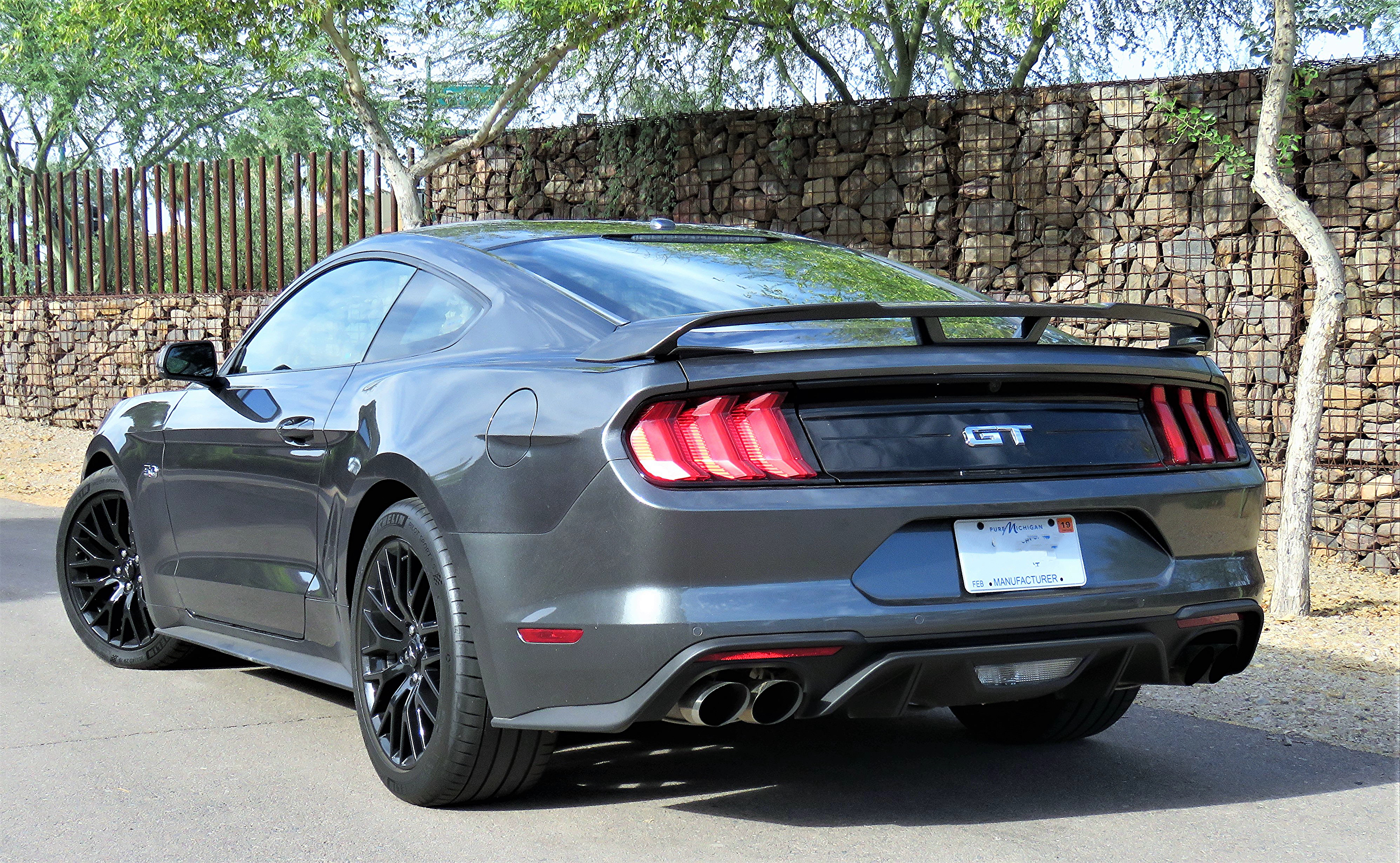
Beyond that, there are modes on a console toggle switch that move up the performance through Sports + (where I liked to keep it), to Track, to Drag Strip and, returning to the real everyday world, to ice and snow.
The changing settings are reflected on the dashboard. When in Normal mode, the gauges look, well, normal, with a round speedo on the right and regular-looking tach on the left, all done as electronic images.
Switch to Sport, and the array changes, with the tach uncurling into a bar shape that curls around the top, designed to be read more quickly and easily by the driver. In track mode, the tach turns to a solid bar across the top and the speedo turns digital.
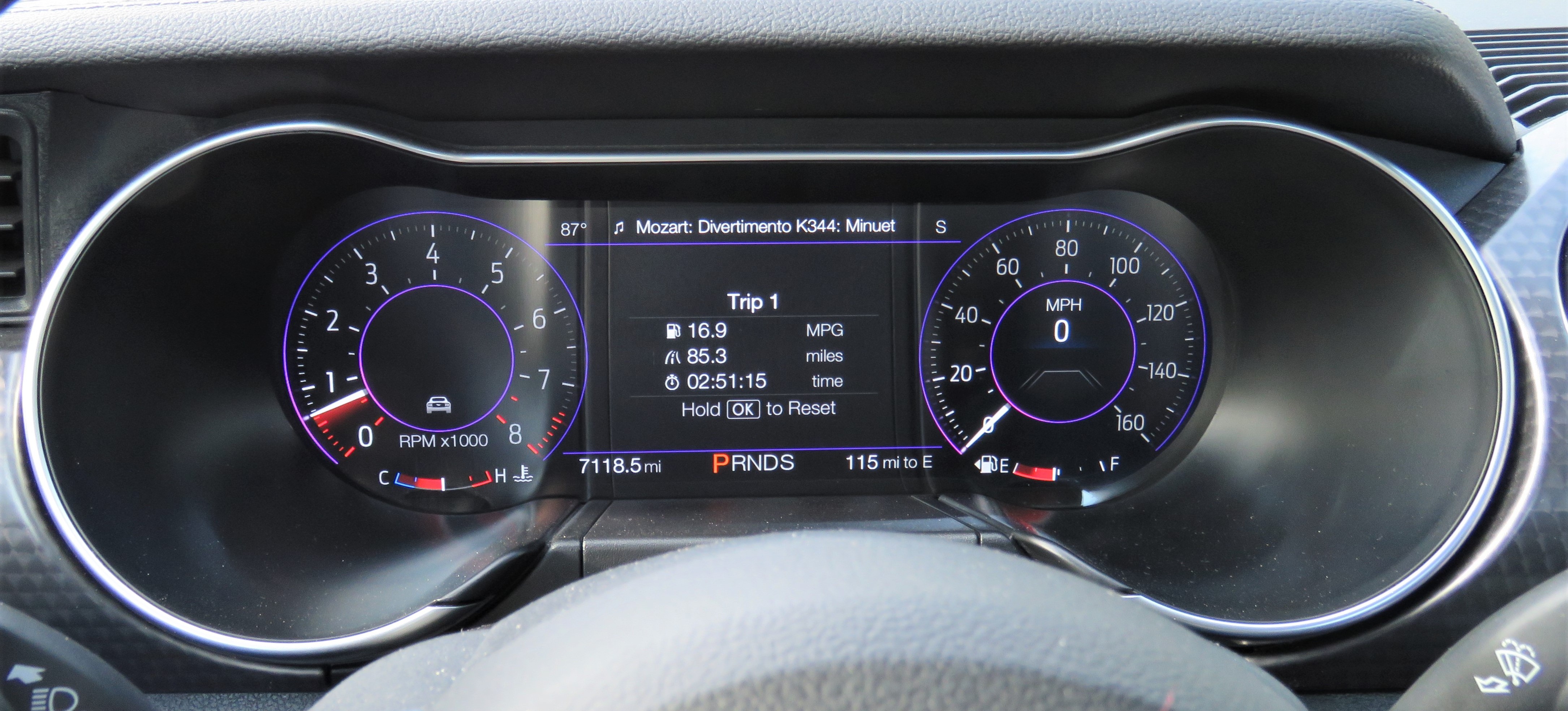
Oh, and by the way, the driver can customize the gauges with a full palate of colors. The array also will translate into 23 different languages, Ford notes, for its international audience, plus 10 different animations to illustrate various functions, if you are so inclined.
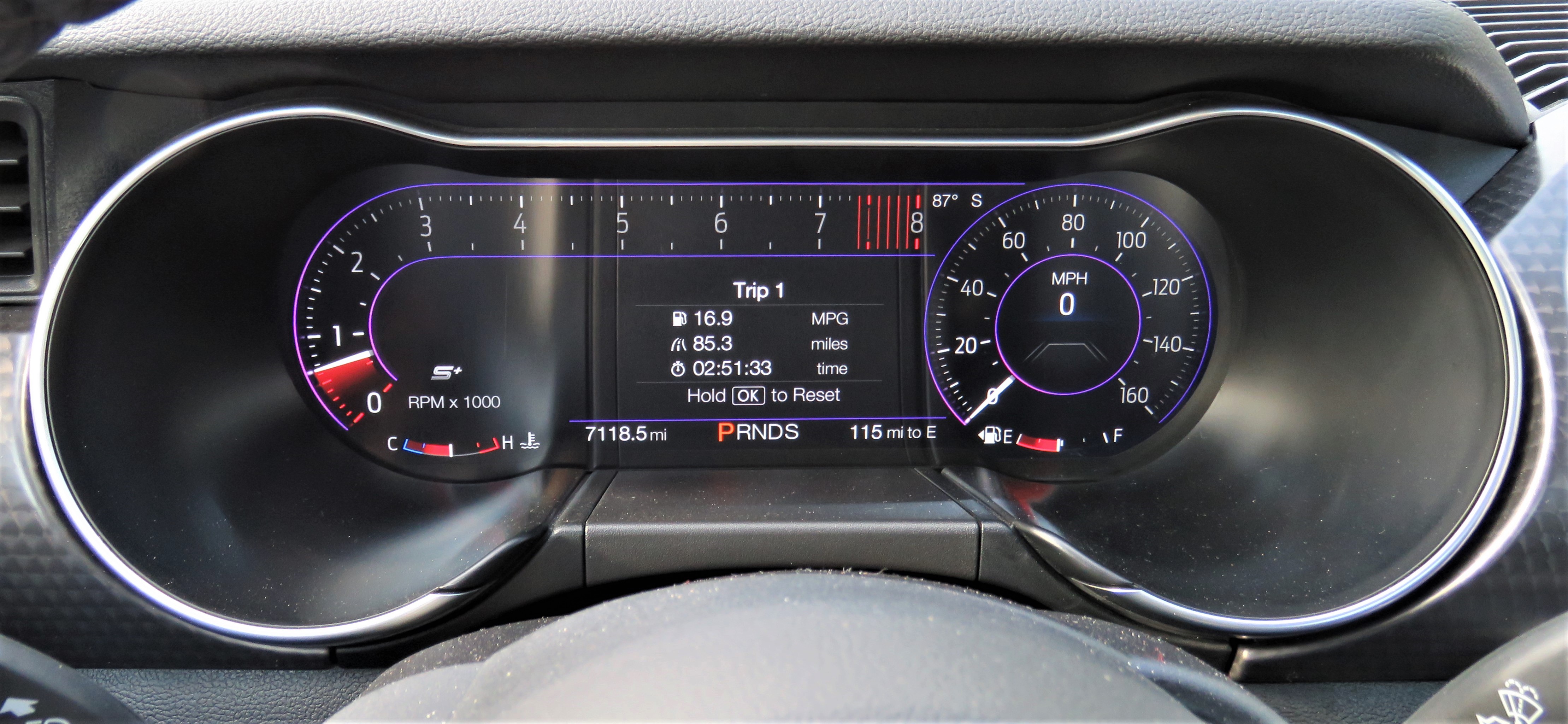
A complete set of secondary gauges is accessed digitally to check on such things as water, oil and myriad other temperature readings, voltage, etc. A pair of analog gauges in the center of the dash are for oil pressure and, with the V8, vacuum. With Mustang’s other engine, a turbocharged 4-cylinder, that gauge measures boost.
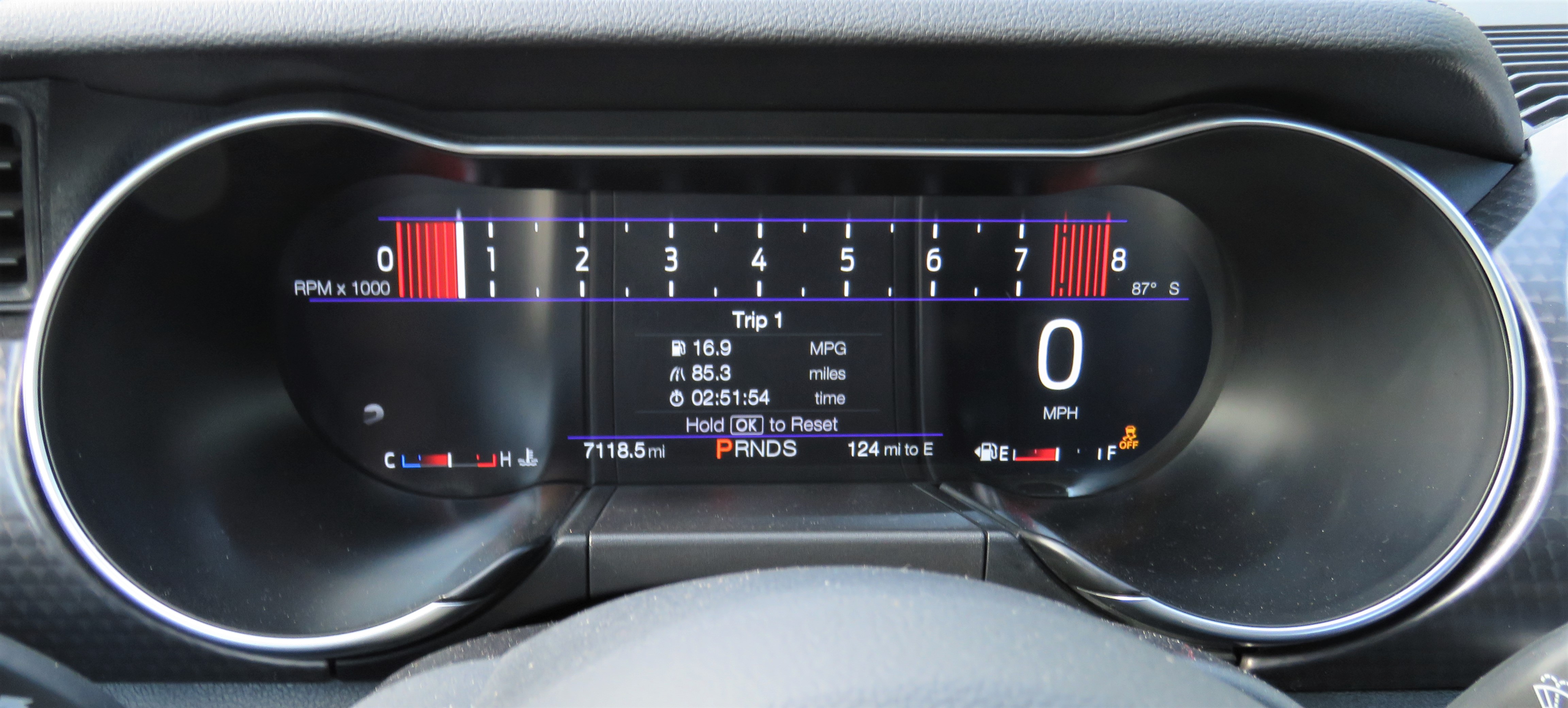
Steering effort is also adjustable, moving from a lighter Comfort setting to Normal to a higher-effort but more-precise Sport setting. Another toggle switch adjusts traction control to a less-intrusive sport setting, or totally off, which you would apply at your own peril on the street. Or for greater control on the track.
But wait, there’s more. For the 10-speed automatic, the shifter can be adjusted from the quick-shifting but unremarkable Normal setting to a meatier mode. Pull back on the shifter and you get the Sport, which holds the gears longer, downshifts more aggressively and, when downshifting, rev matches into each lower gear. There are also paddle shifters on the steering wheel that work with precision, and those downshifts are also rev matched, even when in Normal automatic mode.
The 10-speed works remarkably well in either mode, but that Sport setting gives you a real taste of its capabilities, including such things as autonomously downshifting as you go into a curve so you’re ready to hit it upon exit. It feels more like something from an exotic European sports car than a Ford Mustang.
But while the performance and fuel mileage are better with the automatic over the standard 6-speed manual, I’m among the 50 percent of Mustang GT buyers who opt for shifting themselves because, let’s face it, stick is a lot more fun when driving a sports car.
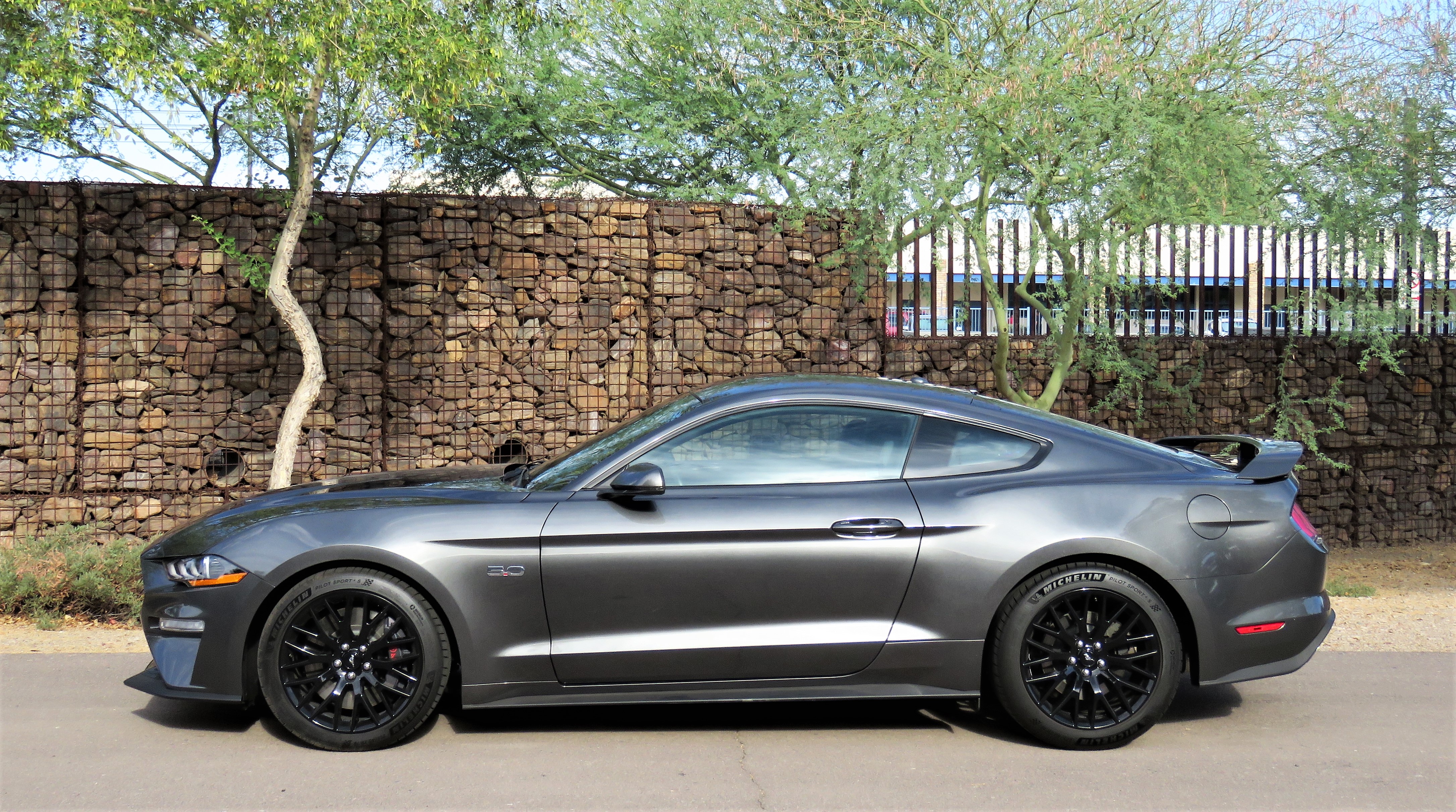
The Mustang that I drove was also outfitted with the highly desirable Performance Package, which cost a stout $3,995 but includes such things as newly developed Michelin Pilot Sport 4S summer tires on 19-inch wheels, with a different chassis tuning to accommodate their phenomenal grip, six-piston front brake calipers, heavier front springs and additional bracing for the front suspension, thicker rear sway bar and Torsen limited-slip differential.
Another option, available only with the Performance Package, is the magic of MagneRide, which automatically adjusts shock damping according to driving conditions, and works amazing well. The system also can be set electronically from Normal to Sport to Track and Drag, which is specially calibrated to help accomplish those low ETs.
Speaking of which, yet another electronic marvel allows you to spin your rear wheels in garishly shrieking, smoky burnouts, ostensibly for warming the tires for drag racing, but more like showing off for your buds. Called Mustang Line Lock, it sets the front brakes while you feed torque to the rear wheels. Naturally, the digital gauges take all this in with a special animation of you spinning your wheels and the smoke it creates.
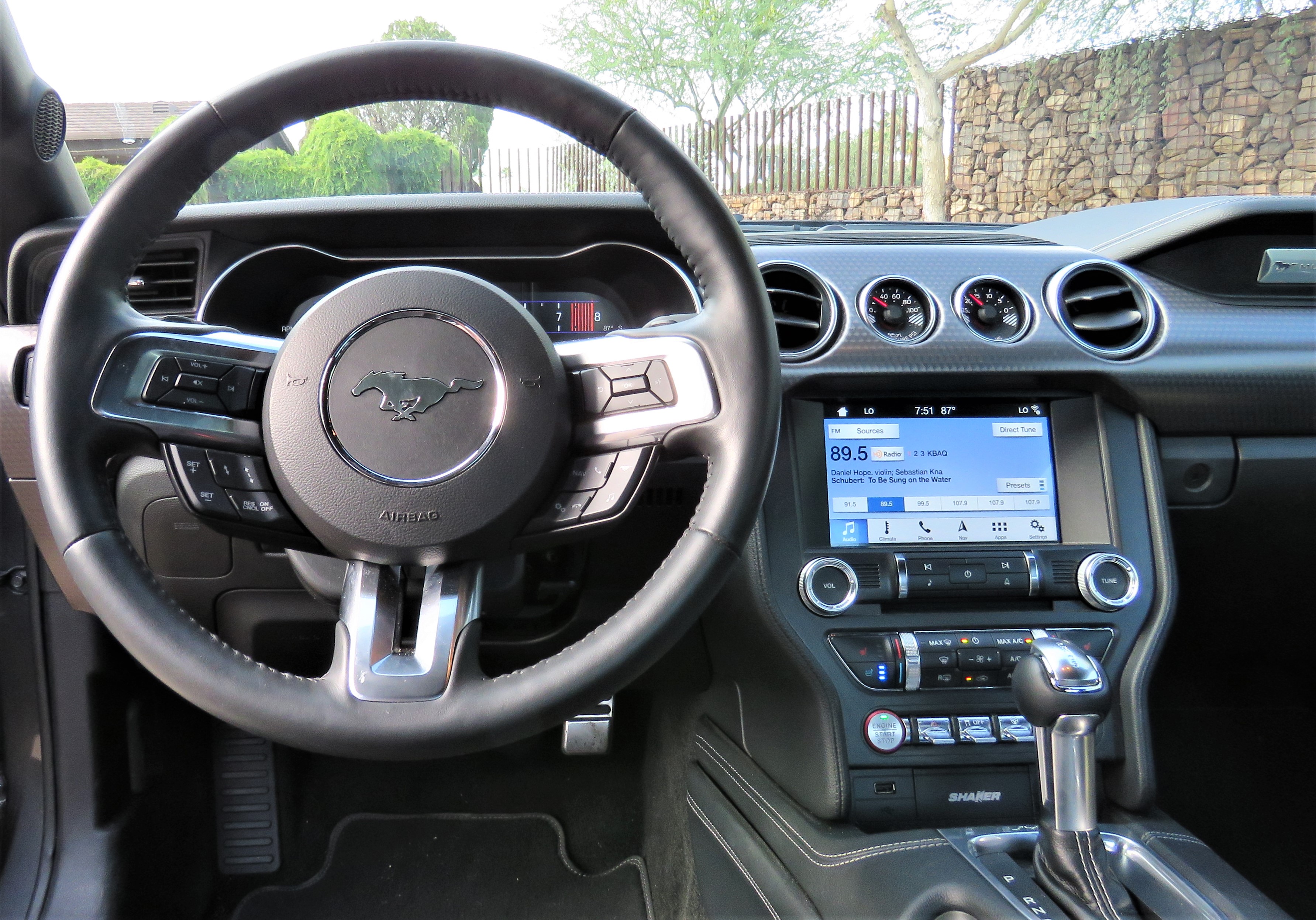
But apparently, Mustang GT is totally for real on the strip, with Ford boasting that when in Drag Strip mode with the 10-speed, Performance Package and MagneRide, it can sprint to 6o mph in less than four seconds, putting it into the company of those snooty Europeans.
All I know is, when all the buttons and switches and levers are set to the most-aggressive performance modes, a stomp on the accelerator at standstill makes all hell break lose. Smoky screeching tires and rocket-sled acceleration. Donuts are shamefully easy.
I realize that the GT does not have the power delivery of, say, a Shelby GT500 or a Dodge Challenger Hellcat, but this is a very satisfying muscle car for anyone but the most-hardcore horsepower junkies. Of course, there are plenty of aftermarket companies ready to jump in and provide more output.

Aside from rushing off in a straight line, Mustang GT has become a highly accomplished sports car. While still maintaining its lifelong setup of front engine, rear drive in a two-plus-two coupe or convertible, Mustang joined the modern age in recent years with independent rear suspension.
Now, I never had any issue with live-rear-axle Mustangs of the past, always enjoying the handling whatever the limitations, but the IRS and all those high-tech enhancements made the test car into an agile and spirited machine on the back-road twisties, the suspension equating itself well in conjunction with those amazing Michelin performance tires.
But not all is sweetness and light with the Mustang. First off, there’s that scowling mug, a front fascia that looks as mean and grumpy as a longshoreman’s before his morning joe. All those jutting surfaces, deep indents and LED decorations are a bit much. The stylists need to tone it down.

Then there’s the price tag. A basic Mustang coupe can be had for a reasonable $27,000 or so, powered by the 300-horsepower Ecoboost turbo-4, which is certainly no slouch, standard transmission and few of the electronic gizmos. The Mustang GT Premium tested here, which included such luxury features as leather seats, started out above $39,000.
With all the performance, safety and technical enhancements, as well as a killer Shaker Pro audio, plus shipping, the bottom line sailed past $50,000. Not a lot for all you get, but pricy for a Mustang.
Still, the test Mustang GT presented something that seemed impossible in the old muscle car days: a car that can be quickly adjusted to perform any way you’d like, instantly adjustable to the given situation. Although sometimes rough-edged, this is about the closest you could come to an all-purpose muscle car.
But wait, there’s still even more. The tester came equipped with an electronic feature that your neighbors should appreciate, part of the Active Valve Performance Exhaust. Sure, you can adjust the exhaust sound while under way to make as much or as little noise as you’d prefer, but it also comes with something else.
An internal timer can be set so that when you start the car in the morning, it shuts the exhaust note down to a hushed thrum rather than a booming roar. At 6 a.m., the Joneses next door would approve.
Now how’s that for an all-purpose muscle car?
2018 Ford Mustang GT Premium
Vehicle type: four-passenger, two-door coupe, rear-wheel drive
Base price: $39,095 Price as tested: $53,160
Engine: 5.0-liter V8, 460 horsepower at 7,000 rpm, 420 pound-feet of torque at 4,600 rpm Transmission: 10-speed automatic
Wheelbase: 107.1 inches Overall length/width: 188.5 inches / 75.4 inches
Curb weight: 3,720 pounds
EPA mileage estimates: 16 city / 25 highway / 19 combined
Assembled in: Flat Rock, Michigan






Loved the 2018 Mustang article
never missed a word
What a car
Thanks
Bob
Curb weight: 7,705 pounds ??????
Oops. Fixed.
curb weight 2700 lbs?
Ouch. Fixed yet again
What this car needs, really needs (aside from a restyle – it’s a truly ugly car) is real innovation: lose 500 pounds. More and more horsepower and more and more weight isn’t the viable way forward. And to all those who snuffle at that being "impossible", I ask how many of you, ten years ago, would have believed that a standard American car would be sold that had over 600 horsepower? Or that there’d be a SELECTION of cars with that or above that level of power? Put these cars on a diet. See what 460 HP feels like in a 3200 pound car….wait: buy a Corvette.
May i receive updates on Ford Mustang 3-4 years used cars with 4 doors?
And updates on SUVs of lower than 3000cc, please.